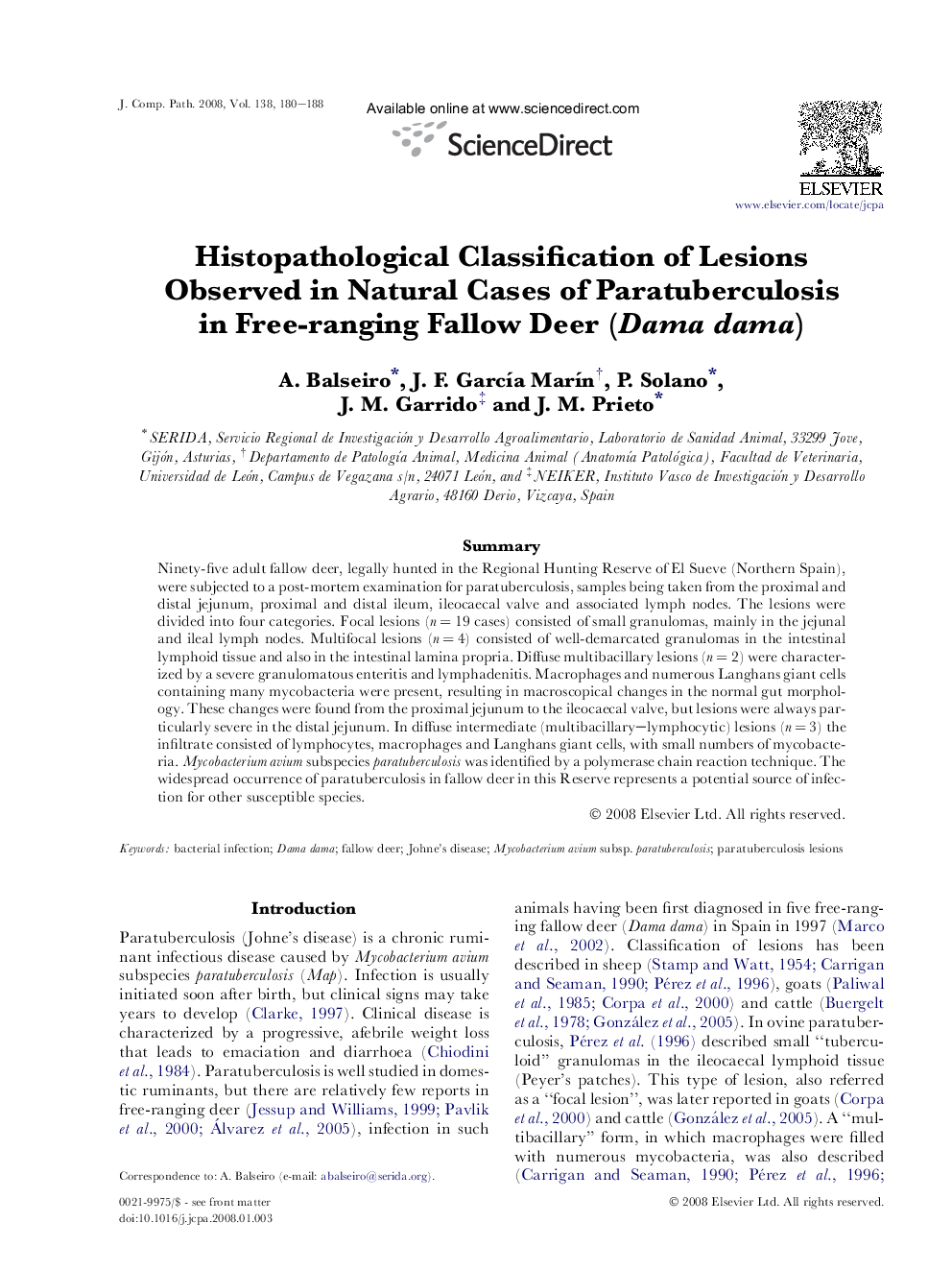| Article ID | Journal | Published Year | Pages | File Type |
|---|---|---|---|---|
| 2438490 | Journal of Comparative Pathology | 2008 | 9 Pages |
SummaryNinety-five adult fallow deer, legally hunted in the Regional Hunting Reserve of El Sueve (Northern Spain), were subjected to a post-mortem examination for paratuberculosis, samples being taken from the proximal and distal jejunum, proximal and distal ileum, ileocaecal valve and associated lymph nodes. The lesions were divided into four categories. Focal lesions (n = 19 cases) consisted of small granulomas, mainly in the jejunal and ileal lymph nodes. Multifocal lesions (n = 4) consisted of well-demarcated granulomas in the intestinal lymphoid tissue and also in the intestinal lamina propria. Diffuse multibacillary lesions (n = 2) were characterized by a severe granulomatous enteritis and lymphadenitis. Macrophages and numerous Langhans giant cells containing many mycobacteria were present, resulting in macroscopical changes in the normal gut morphology. These changes were found from the proximal jejunum to the ileocaecal valve, but lesions were always particularly severe in the distal jejunum. In diffuse intermediate (multibacillary–lymphocytic) lesions (n = 3) the infiltrate consisted of lymphocytes, macrophages and Langhans giant cells, with small numbers of mycobacteria. Mycobacterium avium subspecies paratuberculosis was identified by a polymerase chain reaction technique. The widespread occurrence of paratuberculosis in fallow deer in this Reserve represents a potential source of infection for other susceptible species.
